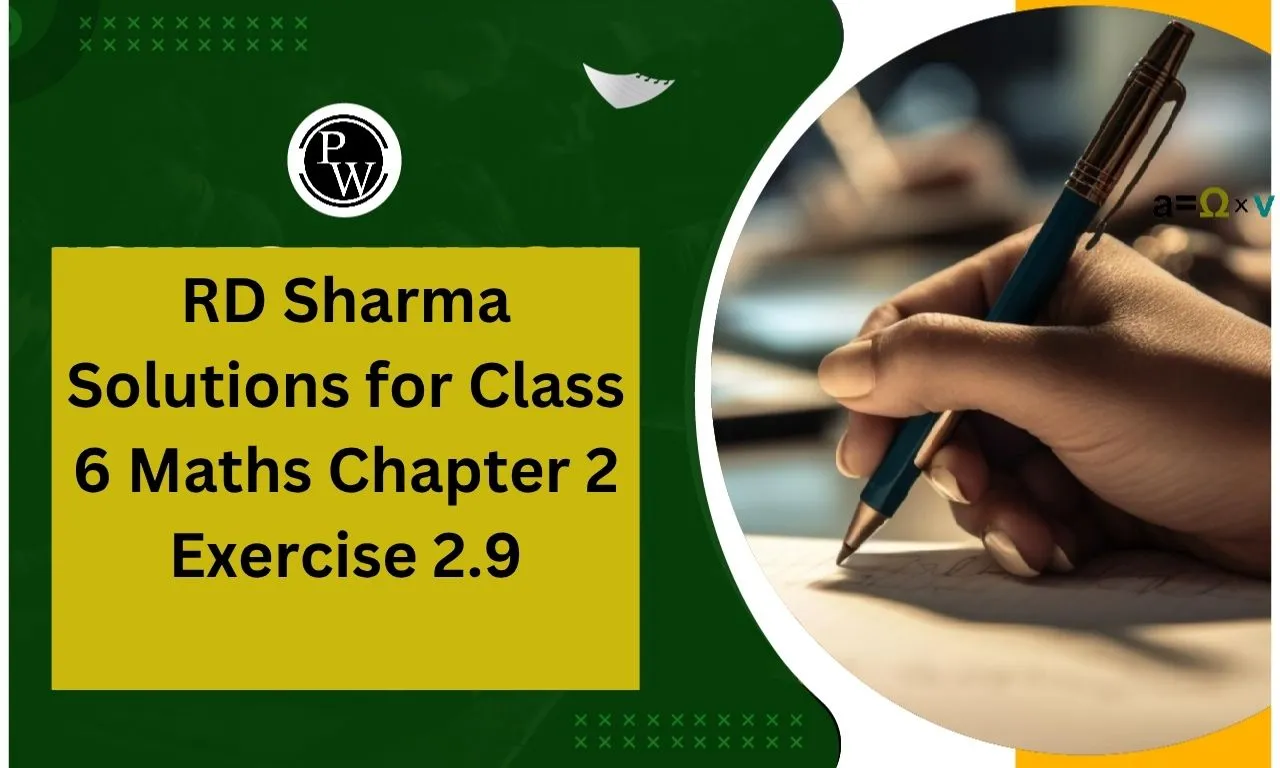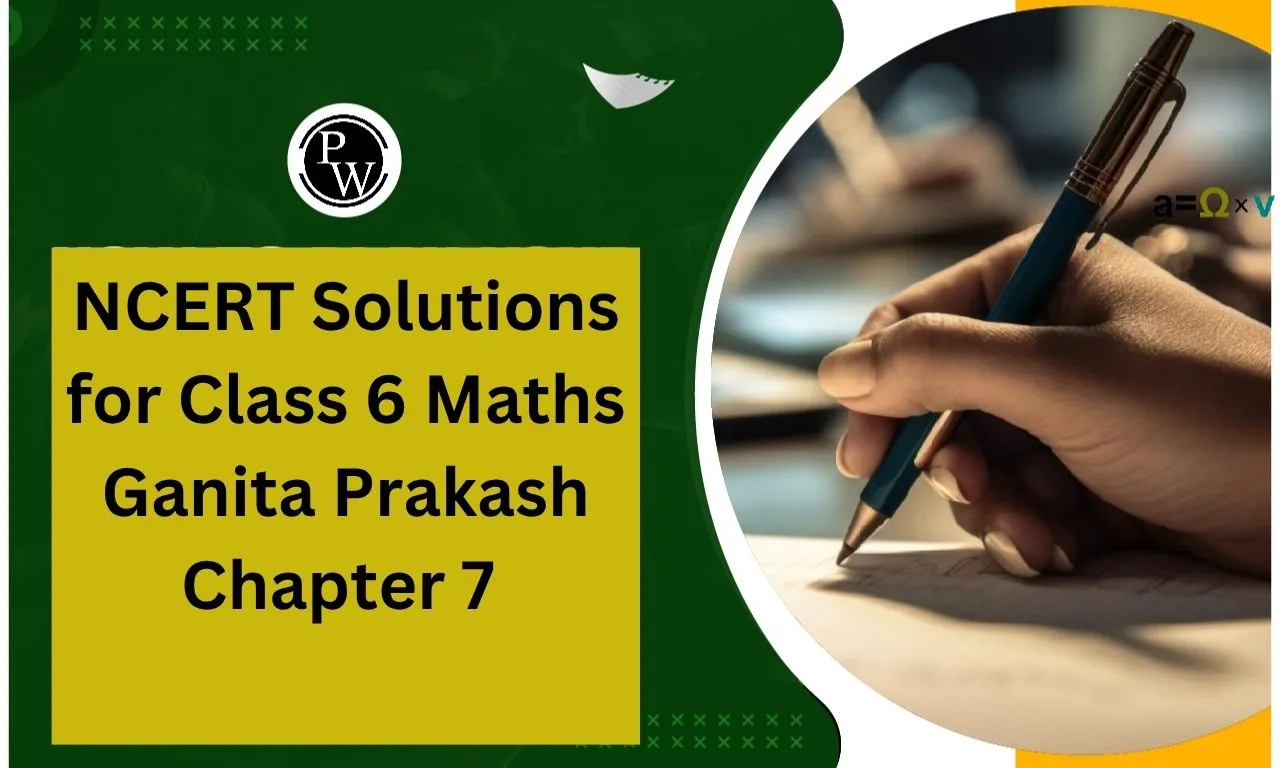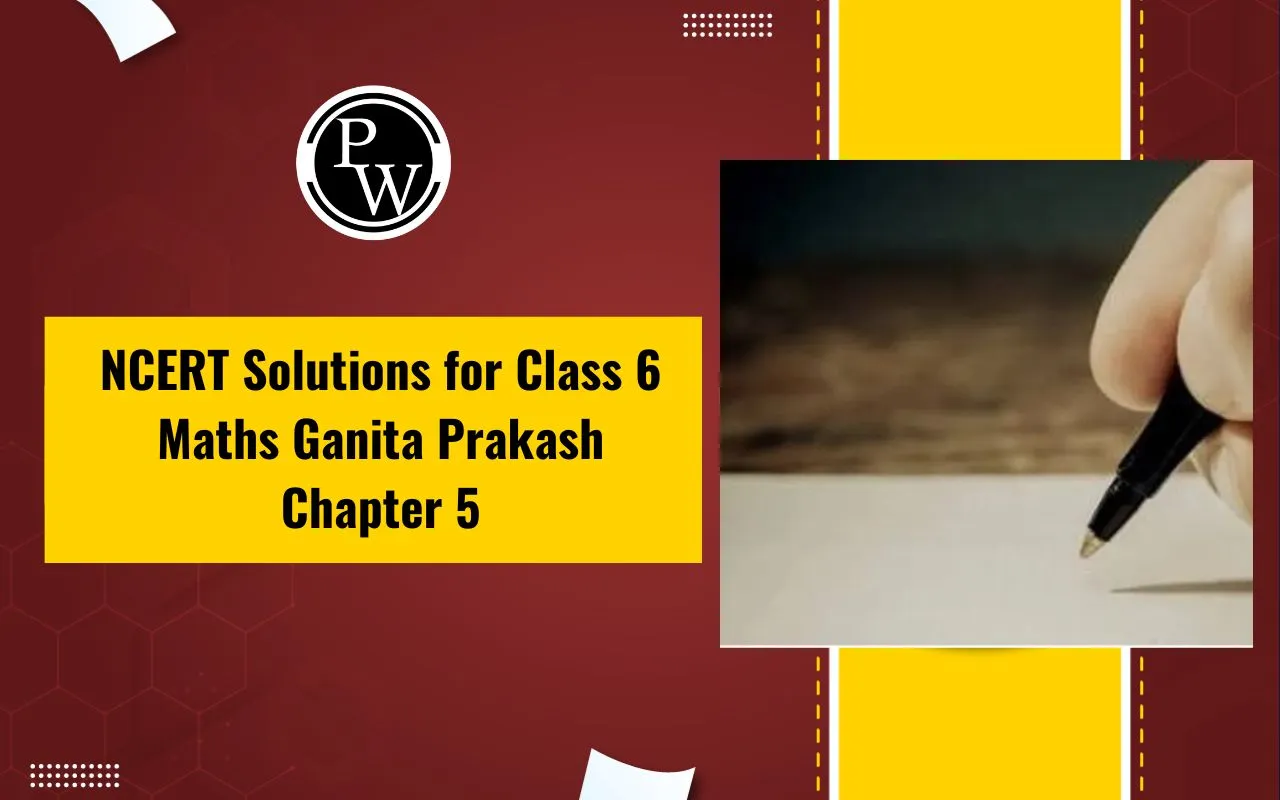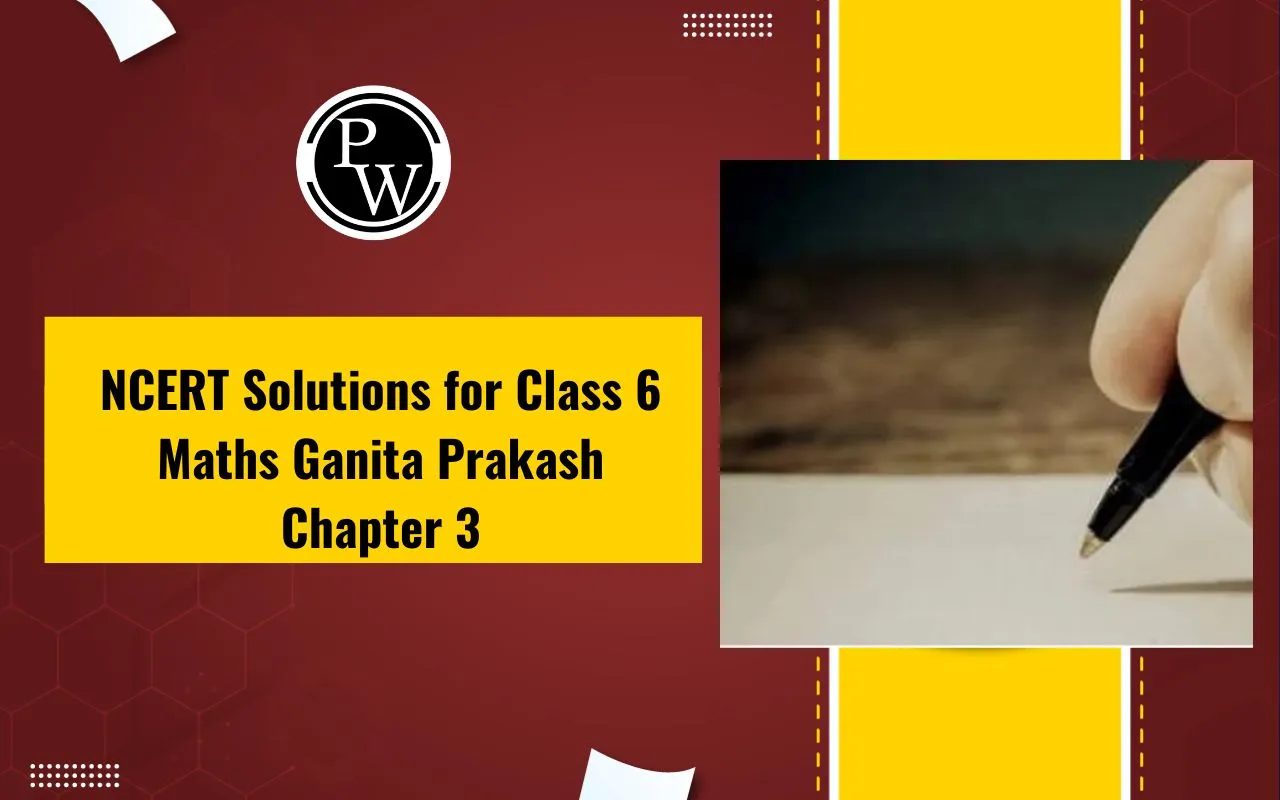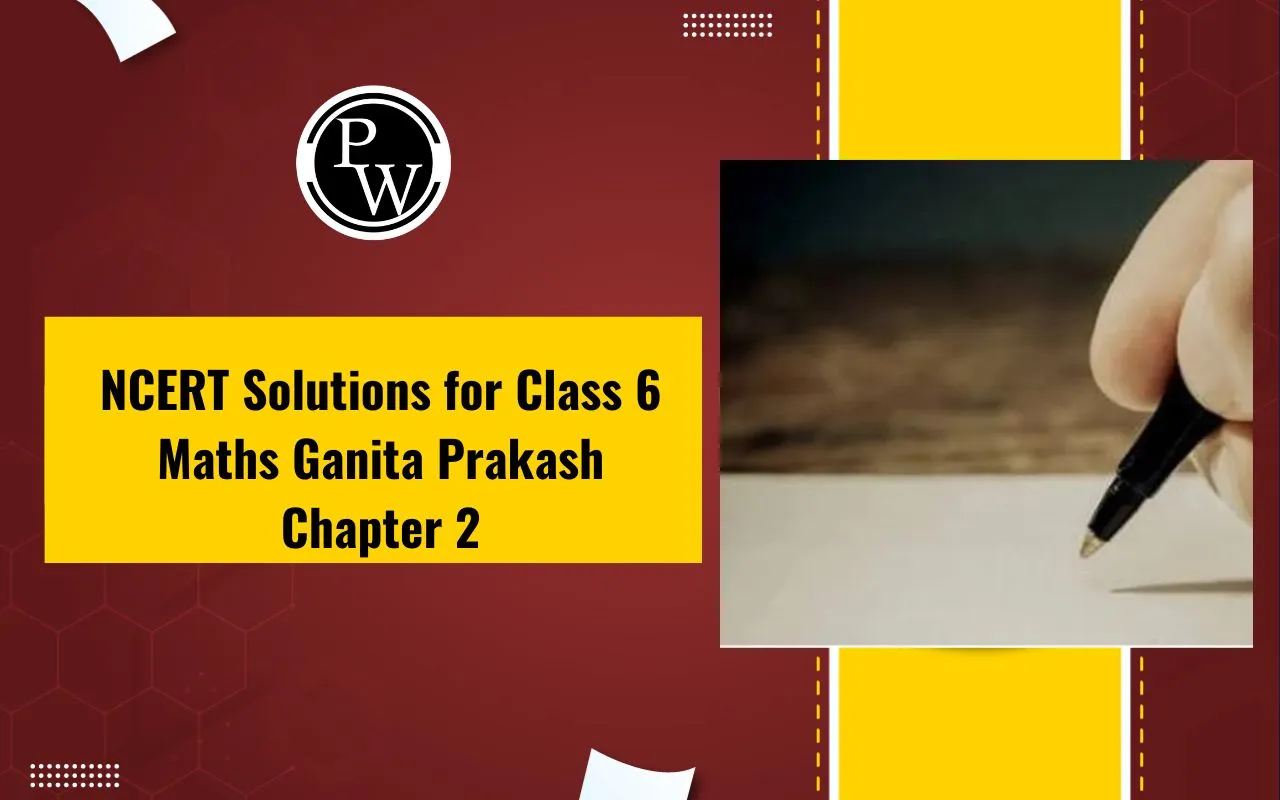
RD Sharma Solutions for Class 6 Maths Chapter 2 Exercise 2.9: RD Sharma Solutions for Class 6 Maths Chapter 2 – Playing with Numbers, Exercise 2.9 offers a comprehensive overview of concepts like HCF and LCM through prime factorization. These solutions are designed as per the latest CBSE syllabus and closely follow the exam pattern, ensuring that students are well-prepared for school assessments.
The step-by-step approach helps in building conceptual clarity, making it easier to tackle questions in previous year papers. Practicing this exercise boosts confidence and problem-solving speed, especially for topics involving divisibility and number relationships. The solutions also help in revision and are ideal for homework and exam preparation.
What is Covered in Class 6 Chapter 2 Playing with Numbers Exercise 2.9?
Exercise 2.9 focuses primarily on the concepts of HCF (Highest Common Factor) and LCM (Least Common Multiple) using the prime factorization method. Here's a detailed breakdown:
1. Prime Factorization
-
Breaking down numbers into their prime factors.
-
Helps in finding both HCF and LCM easily.
-
Example: 60 = 2² × 3 × 5
2. Finding HCF (Highest Common Factor)
-
HCF is the greatest number that divides two or more numbers exactly.
-
Using prime factorization: Take the common prime factors with the lowest powers.
-
Example: HCF of 60 and 72 = 2² × 3 = 12
3. Finding LCM (Least Common Multiple)
-
LCM is the smallest number that is exactly divisible by two or more numbers.
-
Using prime factorization: Take all prime factors with the highest powers.
-
Example: LCM of 60 and 72 = 2³ × 3² × 5 = 360
4. Word Problems Based on HCF and LCM
-
Real-life applications of HCF and LCM
-
Examples may include situations involving repetition, synchronization, or grouping items.
5. Comparison Between HCF and LCM
-
Conceptual clarity on when to use HCF vs LCM.
-
HCF for dividing tasks/items; LCM for synchronizing events.
RD Sharma Solutions for Class 6 Chapter 2 Playing with Numbers Exercise 2.9
Below are the RD Sharma Solutions for Class 6 Chapter 2 Playing with Numbers, Exercise 2.9. These solutions are carefully prepared to help students understand the concepts of HCF and LCM and improve their problem-solving skills.
1. Determine the LCM of the numbers given below:
(i) 48, 60
(ii) 42, 63
(iii) 18, 17
(iv) 15, 30, 90
(v) 56, 65, 85
(vi) 180, 384, 144
(vii) 108, 135, 162
(viii) 28, 36, 45, 60
Solution:
(i) 48, 60
We know that prime factorization of
48 = 2 × 2 × 2 × 2 × 3
60 = 2 × 2 × 3 × 5
Hence, the required LCM = 2 × 2 × 2 × 2 × 3 × 5 = 240
(ii) 42, 63
We know that prime factorization of
42 = 2 × 3 × 7
63 = 3 × 3 × 7
Hence, the required LCM = 2 × 3 × 3 × 7 = 126
(iii) 18, 17
We know that prime factorization of
18 = 2 × 3 × 3
17 = 17
Hence, the required LCM = 2 × 3 × 3 × 17 = 306
(iv) 15, 30, 90
We know that prime factorization of
15 = 3 × 5
30 = 2 × 3 × 5
90 = 2 × 3 × 3 × 5
Hence, the required LCM = 2 × 3 × 3 × 5 = 90
(v) 56, 65, 85
We know that prime factorization of
56 = 2 × 2 × 2 × 7
65 = 5 × 13
85 = 5 × 17
Hence, the required LCM = 2 × 2 × 2 × 5 × 7 × 13 × 17 = 61880
(vi) 180, 384, 144
We know that prime factorization of
180 = 2 × 2 × 3 × 3 × 5
384 = 2 × 2 × 2 × 2 × 2 × 2 × 2 × 3
144 = 2 × 2 × 2 × 2 × 3 × 3
Hence, the required LCM = 2 × 2 × 2 × 2 × 2 × 2 × 2 × 3 × 3 × 5 = 5760
(vii) 108, 135, 162
We know that prime factorization of
108 = 2 × 2 × 3 × 3 × 3
135 = 3 × 3 × 3 × 5
162 = 2 × 3 × 3 × 3 × 3
Hence, the required LCM = 2 × 2 × 3 × 3 × 3 × 3 × 5 = 1620
(viii) 28, 36, 45, 60
We know that prime factorization of
28 = 2 × 2 × 7
36 = 2 × 2 × 3 × 3
45 = 3 × 3 × 5
60 = 2 × 2 × 3 × 5
Hence, the required LCM = 2 × 2 × 3 × 3 × 5 × 7 = 1260
RD Sharma Solutions for Class 6 Maths Chapter 2 Exercise 2.9 PDF Download
Below we have provided the RD Sharma Solutions for Class 6 Maths Chapter 2 Exercise 2.9 in PDF format for easy download and reference. Teachers prepare these solutions and follow a step-by-step approach to help students understand the concepts clearly.
They are designed per the latest syllabus and ideal for regular practice and exam preparation. Students can download the PDF to study offline and strengthen their understanding of the topics covered in this exercise.
RD Sharma Solutions for Class 6 Maths Chapter 2 Exercise 2.9
Study without using the internet
Key Features of RD Sharma Solutions for Class 6 Maths Chapter 2 Playing with Numbers Exercise 2.9
Here are some exclusive key features of RD Sharma Solutions for Class 6 Maths Chapter 2 Playing with Numbers Exercise 2.9:
-
Step-by-Step Solutions: Each question is solved in a clear, detailed manner to enhance concept clarity.
-
Focus on Prime Factorization: Special emphasis on LCM, HCF, and divisibility techniques relevant to Exercise 2.9.
-
Aligned with Latest Syllabus: Fully updated as per the current CBSE Class 6 curriculum.
-
Practice-Oriented: Helps build strong foundational skills through varied problem types.
-
Easy to Understand Language: Ideal for self-study with student-friendly explanations.
-
Prepared by Teachers: Solutions created by experienced teachers for maximum accuracy.
-
Printable & Downloadable PDF: Available for free to study anytime, anywhere.
RD Sharma Class 6 Maths Chapter 2 Exercise 2.9
What is the main concept in Exercise 2.9?
Are the solutions based on the latest syllabus?
Are these solutions aligned with the CBSE syllabus?
Are these solutions suitable for self-study?

